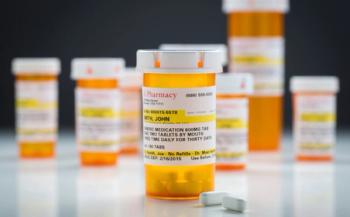
Pharmacists: The Other White Coats
Patients in search of face time with a healthcare provider are stopping into their local drugstores, where consultations are free and the wait time is shorter.
Patients in search of face time with a healthcare provider are stopping into their local drugstores, where consultations are free and the wait time is shorter. Pharmacists are in a unique position, too, to move the needle on drug adherence.
Despite an ever-expanding digital medium, with new channels for conversation and new collections of disease-related information popping up all the time, patients still prize face-to-face interaction with experts. According to recent research conducted by McKesson, 72% of patients cite doctors as the top source for information related to their conditions. The internet comes in second, at 54%, followed by pharmacists at 44%.
Physicians may have time to give patients a rough overview of their disease, but discussions around the importance of drug adherence are lacking. Patients who don’t adhere to their medication regimen – an ongoing and multifactorial problem that not only drives up healthcare costs due to unnecessary hospitalizations, but also punches holes in drug sales – are often not getting the kind of instruction from their physicians that could help move the needle on adherence.
“We know from talking to physicians that they aren’t really armed and able to have those conversations around adherence,” says Derek Rago, VP marketing and strategy at McKesson. “Physicians get detailed on a product, but they don’t get detailed on the specific barriers that patients may face when taking the medication.”
Enter the pharmacist, whom Rago calls “the most trusted advisor in the healthcare continuum.” The role of the pharmacist is changing as patients, shooed out of their doctor’s offices, require more instruction on managing chronic conditions, and dealing with the associated challenges of staying on a medication. To address this need, McKesson, on behalf of its pharma clients, has recruited pharmacists working in retail pharmacies to become behavioral coaches, and to discuss adherence issues with patients on their first and second prescription fill. Participating pharmacists are trained to provide “behavioral coaching sessions” which, in the case of a diabetes program for one client, led to an additional four prescriptions dispensed over 12 months, says Rago. By speaking directly with individual patients, pharmacists can ascertain the barriers to adherence, and accentuate the positives of a medication regimen. “We’ll say, ‘what did your doctor tell you about the medication and what you can expect?’ Then we know what they’ve already been told, so we can properly inform them in a very positive way, and see if they have the conviction and belief that they can stay on medication,” says Rago. Patients can then be segmented and engaged differently based on different needs.
Whether or not they’re a part of McKesson’s network of behavioral coaches, pharmacists in general are playing a more active role in patient care, according to recent Manhattan Research survey data. Of the 752 US pharmacists surveyed, roughly two-fifths said they spend more time providing care and support for patients than they did two years ago. Seventy-five percent of the pharmacists surveyed said they wanted access to online patient education materials from pharma.
Just a few years ago, retail pharmacies fretted over the emergence of mail-order pharmacy, and the large pharmacy benefits managers (PBMs) that hoped (and still hope) to
Technology shouldn’t be discounted of course; with a rise in ePrescribing, and the ongoing adoption of electronic health records, pharmaceutical companies will be able to deliver co-pay assistance to patients through their prescribing physicians – docs can pin digital co-pay coupons to an ePrescription, for example – with less of a hassle. And all of this tech-enabled automation is freeing up pharmacists to spend even more time working the floor.
“Newer pharmacists coming through the system are more clinically educated, and they have the highest frequency of patient interaction” among HCPs, says Rago. Those bricks and mortar pharmacies eying the future are “moving the pharmacist from the back of the store to the front, because they think that’s what will differentiate them in terms of the pharmacy business as a whole,” he says.
Newsletter
Lead with insight with the Pharmaceutical Executive newsletter, featuring strategic analysis, leadership trends, and market intelligence for biopharma decision-makers.





